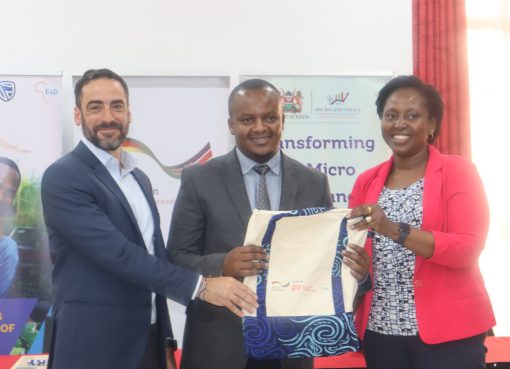Cotton farmers in Lamu have appealed to the national government to subsidize farm inputs to enable them to sustain the cultivation of the crop.
This comes in the wake of renewed efforts by the county government to revive the sector after cotton farmers were issued with free hybrid seeds to improve production when it emerged that the new variety produced 800 kilos per acre compared to 250 kilos per acre they reaped from the traditional seeds.
Cotton farmers were last year able to earn Sh48, 000 per acre from the crop, though they contend that their margins were mostly taken up by farm inputs and other overhead costs.
According to Peter Ndirangu, a cotton farmer with 10 acres, cotton farmers have in the past been demotivated not only by the high cost of farm inputs such as fertilizers and pesticides but also the poor gate prices that they have had to bear despite consistently producing the crop.
“We are seeking the national government’s intervention in providing subsidies on fertilizers and pesticides which in the long run tend to thin our profit margins,” he says.
“As much as we appreciate the provision of hybrid seeds by the county government, a lot more needs to be done by way of policy and the provision of subsidies to ensure that cotton farming does not die in Lamu,” Ndirangu states.
Cotton farming in Lamu accounts for at least 35 percent of the country’s crop production, with farmers observing that there is need for greater organization around cotton farming in the county to ensure its sustainability.
“As things stand, we do not have a cotton growers association in the country that could help address issues afflicting farmers and the sector in general,” Mwangi Migwi, a 5 acre cotton farmer opines.
Migwi further notes that strengthening existing cooperatives could aid the farmers in greater organization and mobilization of resources towards improving farming and harvesting methods which he adds would aid in maximizing crop yields.
In 2020 Lamu produced 800,000 kilogrammes of cotton against a target of 3 metric tonnes, which according to the farmers could have been achieved if farm input costs were not as prohibitive.
“Providing farmers with the C-567 cotton hybrid seed went towards some way in motivating the farmers to redouble their efforts to grow cotton which has been the backbone in Mpeketoni town’s growth in the past,” Lamu Deputy Governor Abdulhakim Mbwana states.
At its peak during the 1980s and early 1990s, cotton farming in Lamu’s Mpeketoni area accounted for at least 1.4 metric tonnes according to the deputy governor who also doubles as the County CEC for Agriculture.
He further reveals that with an improved cotton farming sector, the crop could easily account for 20 percent of the county’s economy with revenues of as high as Sh200 million achieved.
“Last year, with the provision of the free hybrid seeds, the 3,000 cotton farmers earned Sh48 million,” Mbwana divulges.
Lamu Cotton Seeds Association chairman James Kariuki contends that apart from reduced subsidies, farmers also needed better gate prices on the crop.
“The farmers are in dire need of better pricing on the harvested crop in order to keep them motivated to keep planting the crop,” Kariuki says.
He further reiterates that there is need for better organization towards cotton farming in Lamu, as there was no ginnery in Lamu that would aid in improving value chain addition and better profit margins for the farmers.
Speaking exclusively to KNA recently while on a familiarisation tour with cotton stakeholders in the county, Thika Clothing Mills Limited Managing Director Tejal Dodhia commended the county government for supporting the cotton farmers with seeds, but however stated that there is need for the county government to pull its weight and support the cotton farmers by building for them a ginnery.
“The ginnery could come about as a Public Private Sector Partnership in which both the county government and private stakeholders, chiefly the cooperatives collaborate in building a ginnery that would be a convenience for the farmers,” Dodhia states.
She further lauds the cotton farmers in Lamu, for not having left farming the crop wholesale despite the tough economic challenges that the sector has faced in recent years since the last ginnery was closed down in the early 2000s.
“The farmers have had to contend with sending their crop to the Kitui ginnery which reduces their margin, and thus a ginnery in Lamu would aid in improving the farmers profit margins,” she adds.
Tejal however expresses optimism over the future of cotton farming in Lamu, revealing that her company would be buying cotton directly from the farmers at Sh50 per kilo an improvement from the paltry Sh38 per kilo they have been receiving in recent years.
“Production of cotton in Lamu will no doubt increase with the introduction of the Sh50 per kilo gate price,” she states, reiterating the need by the county and national governments to collaborate in increasing support towards sustenance of the crop.
The Thika Clothing Mills MD further stated that with improved crop harvest, the manufacturer would not have to import cotton from Uganda and Tanzania, noting the huge potential the sector has despite the lack of subsidies.
Agriculture and Food Authority (AFA) in charge of marketing Deputy Director Fanuel Lubanga in his remarks, reveals that the national government in its efforts to improve the sector set aside Sh140 million in the national budget aimed at improving pesticide, hybrid seed research and cotton farming development.
“It is not all gloomy for the sector which has survived the brink and is now being taken up in other counties as a potential earner for among new farmers,” Lubanga states.
He further notes that cotton farming is also included in the Big-4 agenda, with the development budget aimed at reducing importation of the crop by textile manufacturers in the country.
The AFA official gave the assurance that the government would do everything possible to assist the farmers to keep them in the production of cotton.
He also states that the government remains committed to developing the industrial base of the country’s cotton sector, which he emphasized has the potential to create more jobs and strengthen the economy.
By Amenya Ochieng





